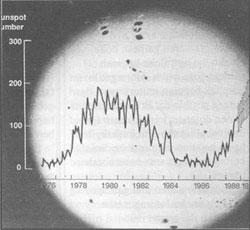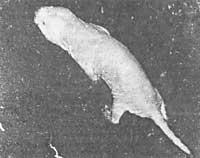Does the subway arrive?
1988/08/01 Urdangarin Alustiza, Juan Antonio Iturria: Elhuyar aldizkaria
Introduction Introduction Introduction Introduction
As has been happening for many years, the METRO, the "Metro de Bilbao" of ditxos, or the "Metro del Bajo Nervión", as they have recently renamed it, is a pride launched at that time of prosperity that is already far away.
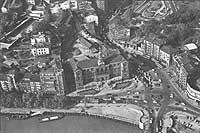
It seems that this time it is real, or almost at least real, even if you can't believe it for people. He has heard of ...
Let us put aside this metaphysical analysis of being or not a believer and go to investigate this megaproject, as it cannot be in depth, at least superficially. And in this regard, let's see what, how, when, for whom, where, why, etc. some of them with metro.
Environment Environment Environment
"Bilbao and the Ferrocarril Metropolitano al Bajo Nervión" (CMT), as its name indicates, would be located in the area of Bajo Nervión, with a population of almost a million inhabitants.
In the aforementioned region, which has only an area of 372 m 2, the following aspects can be distinguished:

Once analysed the trips made daily in the environment in which we move, its approximate number would be:

And take into account that more than 65% of all trips have as origin and/or destination Bilbao.
On the other hand, the geography itself has a lot to say when it comes to studying the environment from the point of view of transport. This unfolding of the area by the river, the form of hole that means being surrounded by mountains, etc. For example, they are not beneficial.
We cannot forget the Port, the most used corner of the River. It is not necessary to forget the accumulated industrial implantation, although, having already taken the way of burial (voluntary or not), the difficulties involved have been alleviated. We must not forget the high urban density.
And to aggravate all this, there is a network of poor media, especially in Bilbao. In addition, the obsolete Public Transport (both by buses and by trains, except on the right) drives people to private transport. To the detriment of society, that is.
The situation described poses serious problems and concerns when it comes to moving to the whole region, with unavoidable problems of circulation and parking in the center (Bilbao), without taking into account the urbanistic degradation of the surrounding environment.
Could the METRO be the solution to all these problems? There is the question.
General characteristics General characteristics
Asking the question, here are some news about the magnitude of all this.
First, the new metro will have two lines:
- PLENTZIA-ETXEBARRI, 29,1 km long, based on metric width. From Plentzia to San Ignacio will take advantage of the network of Eusko Trenbideak, which will go up to it. In this way, both in Las Arenas and in Erandio will be the underground roads the means to start the urban crossing, while the new station is built in Algorta and the entrance to Lamiako is modified. On the other hand, from San Ignacio to Etxebarria will be completely new, running almost the entire underground route.
- SANTURTZI-BASAURI, 20.2 km long and international width. It will be completely new, mostly buried.
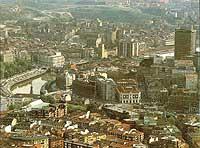
Both lines will have a parallel route between San Ignacio and Etxebarri (8 km). Since two different widths will be used, it is necessary to have more than two lanes per direction (three or four).
Although not yet clean, it seems that three will be placed, one for use of vehicles of two types of width. This alternative can pose symmetry problems due to the different erosion of the rails.
As has been clarified above, the new itineraries will run mostly underground. Thus, with the exception of those already mentioned, if we leave 41.3 km in length to those of San Ignacio and Plentzia, at least 86% of the remaining 20.2 km are buried.
Based on this, there are some differences in construction. For example, some underground sections will be extended directly forward. Others, however, open, build the interior and then cover (for example, Gudaroste etorbidea).
On the other hand, it must be taken into account that the kilometers that go uncovered will go above the pavement or collected (area of Urbinaga).
Since we speak of construction, it is necessary to say two words of crossing the river. The most widespread opinion on this subject can be its difficulty. To those who speak like this, it would be convenient to remember that the Paris metro crosses the Seine River at different depths, one on the other. And to unite France and Britain, what?
In the images and paintings you can see that the metro must cross the Nervión six times. Three of them (Lutxana Barakaldo-San Ignacio, Deusto-Santimamiñe, P. Round-P. Berria) would be underground and the other three (Bolueta–Etxebarri, twice Etxebarri-Basauri) would be bridges.
After seeing where and how the routes go, what we have to analyze is the frequency. Both lines will last 5 minutes and will be coordinated in the center of Bilbao, where both lines run simultaneously, 2.5 minutes. Will it not be too much?. The number of passengers will be the one who answers this question. According to the expected accounts, it would have to be decided. What a favor for all!
Financing Financing Finance
When talking about a job, it is necessary to know the amount of the amount that will be paid for the fulfillment of said work, as well as who or who takes it and where.
In numerical terms, the total budget of this megaproject could reach 60,000 million in 1988.
When studying the division of this quantity, the way in which it was long ago decided to pay this work is as follows:

After entering the new political situation this division has changed several times. Currently, while the courts do not say anything else, it is:

However, as has been heard and read lately, the European Institutions would also participate, offering apparent help. So be it!
Conclusions of the conclusions: Conclusions
Many times it has been claimed that the metro will be a great benefit for the whole society. In the medium and long term, because the consequences that will be produced thus indicate it.
The metro will offer users the following facilities:
- Lighter and more comfortable gears More than 22 million hours of annual savings Savings of between 10 and 14 billion pesetas per year
- More comfortable links with other means of transport, both with buses and other railways, etc.
To the whole of society:
- Promote social levels with primarily average and inferior benefits. Creation of new jobs derived from their implementation. Savings of more than 4% of the total energy used in transport.
- The improvement of the urban environment, both by the streamlining of traffic, which allows a better management of urgent actions, as well as by the adoption of measures for a better preparation of traffic.
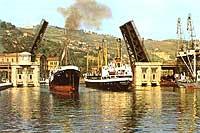
In the short term, however, these benefits will not be shown in any case, but will be seriously harmed. And this, perforations, street cuts, etc. It will be a daily recipe, which will be noticed especially in Bilbao.
Bilbao Metro in Bilbao
We have already said that most of the trips of Bajo Nervión have as departure and/or arrival Bilbao. And so it seemed that, both from the Left, as from the Right, and from the Ibaizabal, with the direction towards the center of Bilbao was enough, as the Metro has done.
But perhaps what has not been taken into account is the important number of trips in Bilbao, both the departure and the destination.
As a result, the travel time between Algorta and Moiua Square (including entry and waiting time) will be 26 minutes, while between Txurdinaga and Moiua itself will be 23 minutes. The question comes immediately: How is it possible?
To somehow solve this error, the City Council of Bilbao proposed in its day the third transversal line, perhaps with good sense. Without addressing in any case his study, the route that was advanced was the following: ERREKALDEBERRI -AMEZOLA -MOIUA -MATIKO -ZURBARAN - OTXARKOAGA, being the station of Moiua the head.
According to the Basque Government, the realization of this third line is totally unnecessary, since the service can be carried out correctly through public transport on the surface.
However, in the future or from the point of view of the design this hypothetical entanglement is assured in the station of Moiua.
And those railways that are still alive today, what? The section between La Naja and Olabeaga will be fully picked up, definitively pressing the "normal limit" with the Port. The new road to Muskiz would be ABANDO - ZABALBURU -AMEZOLA -SANTIMAMIÑE -OLABEAGA ... what freedom! By when?
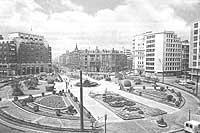
Between Elorrieta and San Nicolás it will also disappear definitively, leaving Deusto something worse than today, like Matiko. Why not resist? Doesn't it help you?
Even if briefly, once we have seen this, we can say that the Bilbao Metro (BMT) is more designed for people in the environment than for Bilbaínos. And leading to the final end, Bilbaínos (in general) will only improve in the background, to the extent that their neighbors abandon private transport and completely destroy the current urban limits.
The metro, at the end
This is the title that Luciano Rincón recently dedicated to an article on the metro. If it doesn't matter, I want to put that title to this end.
When analyzing critically this new obsolete (or restored) project, there may be many contradictions, but more when investigating this ambitious program.
Let us leave the debates, and since what was intended was to make a hole by the will of the authorities, let us give a push among all. To see if there is not a useless black hole and yes a discreet treasure.
In the recent days "Bilbao before his General Plan", Antxon Perez Calleja threw Bilbao when it was time to invent Bilbao. Will the subway serve for that invention? So be it!.
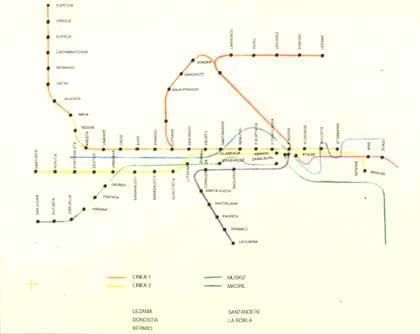

Gai honi buruzko eduki gehiago
Elhuyarrek garatutako teknologia



